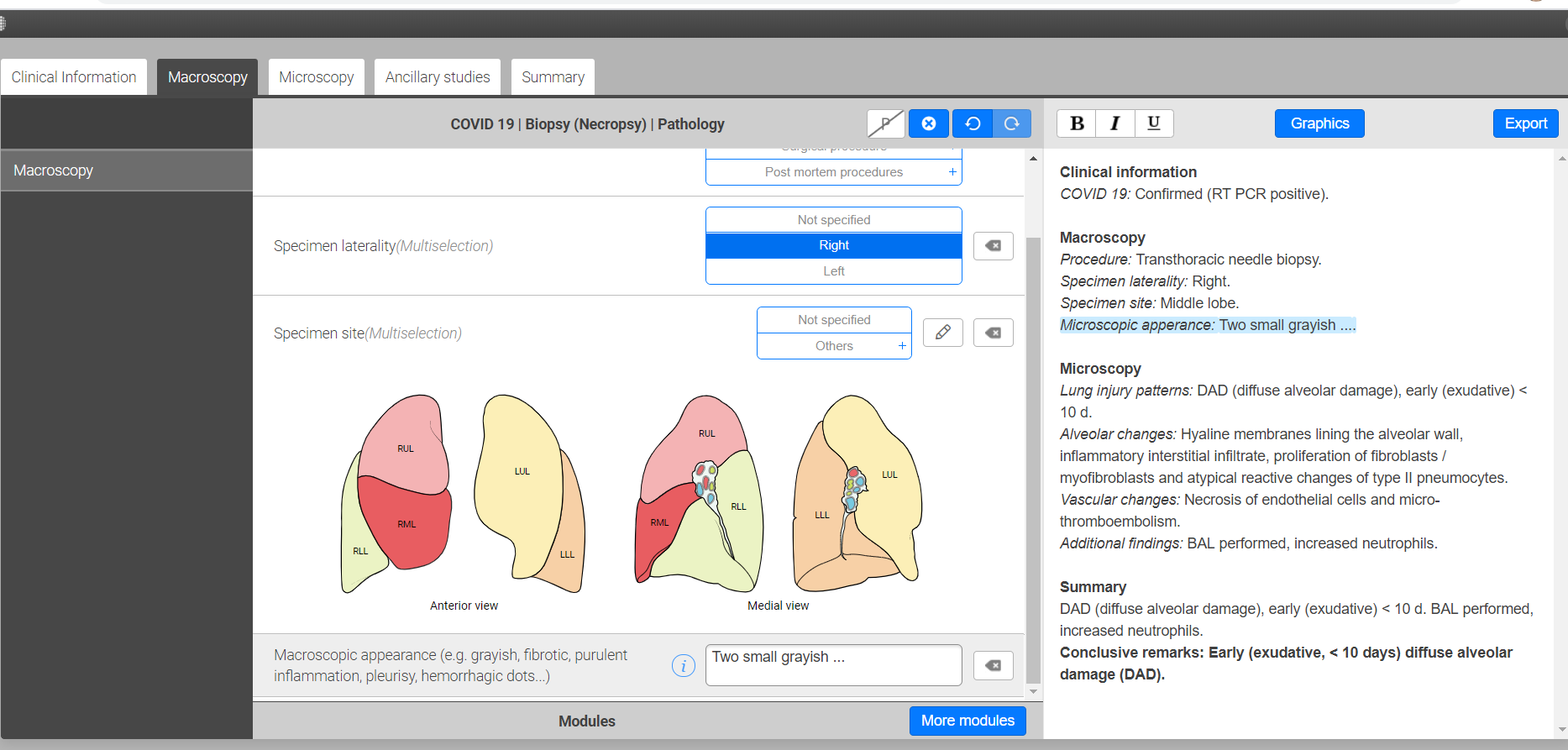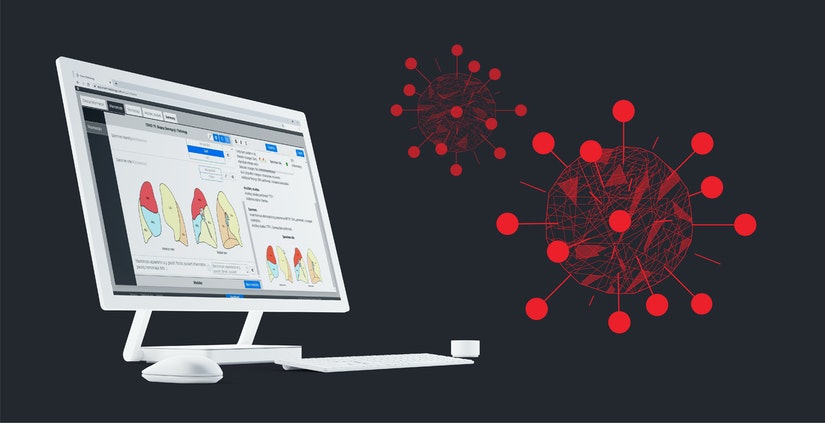1 min read
Smart Reporting to Acquire Fluency for Imaging: uniting to create Jacobian
Munich, Germany / Pittsburgh, USA – October 15, 2025.Smart Reporting, a pioneer in AI-powered diagnostic reporting, has entered into a definitive...
As the COVID-19 pandemic persists, we at Smart Reporting continue our efforts to assist the medical community to accurately report, research, and fight this disease. In March 2020, we created a template to report findings of lung injury to assist in the diagnosis of suspected COVID-19 patients. Today we have a better understanding of this disease and can offer a brand new COVID-19 structured pathology reporting template for histopathological findings in a pulmonary specimen. Like our existing template for reporting pulmonary opacities due to Coronavirus (SARS-CoV-2), this template free of charge - it is currently available internationally in English.
When it comes to the global COVID-19 pandemic, it has become even more important to standardize reporting findings via synoptic and/or structured reporting because the data gathered can be more easily analyzed. As COVID-19 is not a fully understood disease, the international medical community is constantly learning, adjusting, and updating new guidelines for better diagnosis and treatment. As such, the reporting step becomes even more relevant, especially for concise communication and also when creating shared research databases.
For example, in the case of performing lung biopsies of COVID-19 patients (still debatable for clinical routine but necessary for research purposes) and autopsies, pathologists must share their understanding of the disease based on pathological findings.
However, since most pathologists still use free text to explain their findings, this can lead to a lack of unified terminology and structure. While there are certainly components that are mandatory for reporting pathology findings, e.g, biopsy, and cancer reports, each pathologist has his or her own reporting style.
This free-to-use Smart Reporting pathology template guides the user with decision trees through all relevant histopathological findings on a pulmonary specimen taken from patients diagnosed (or suspected) of having COVID-19. For example, the most common to look for would be: Diffuse Alveolar Damage (DAD), Acute Fibrinous and Organizing Pneumonia (AFOP), Organizing Pneumonia (OP), DAD with capillaritis, etc.
See how it works in the video below:
This cloud-based template includes all the up-to-date medical information at a glance with decision trees for guidance, which is extremely helpful regardless of the pathologist’s experience. Furthermore, they contain the most recent background information (infoboxes), exemplary graphics (both sketches and infoboxes) to support the user to create a complete, accurate structured pathology report.
This COVID-19 pathology template:
 Pathologists who perform autopsies are to report findings from COVID patients with a structured, complete reporting tool. Therefore, since both pathologists or researchers aim to explore and data-mine these findings and generate results for their clinics or hospitals, this form of structured reporting is ideal. At the moment, our template is available only in English, please reach out for a collaboration to create it in other languages.
Pathologists who perform autopsies are to report findings from COVID patients with a structured, complete reporting tool. Therefore, since both pathologists or researchers aim to explore and data-mine these findings and generate results for their clinics or hospitals, this form of structured reporting is ideal. At the moment, our template is available only in English, please reach out for a collaboration to create it in other languages.
Register for free now to use the template or log in with your account.
1 min read
Munich, Germany / Pittsburgh, USA – October 15, 2025.Smart Reporting, a pioneer in AI-powered diagnostic reporting, has entered into a definitive...
2 min read
Munich, Germany – May 12 , 2025 – Smart Reporting GmbH, a global leader in AI-powered diagnostic reporting, today announced a strategic partnership...
2 min read
Empowering Radiology with AI: Smart Reporting’s Context-Aware Approach to Automated Reporting
Bringing Intelligence into Structure – and Structure...
